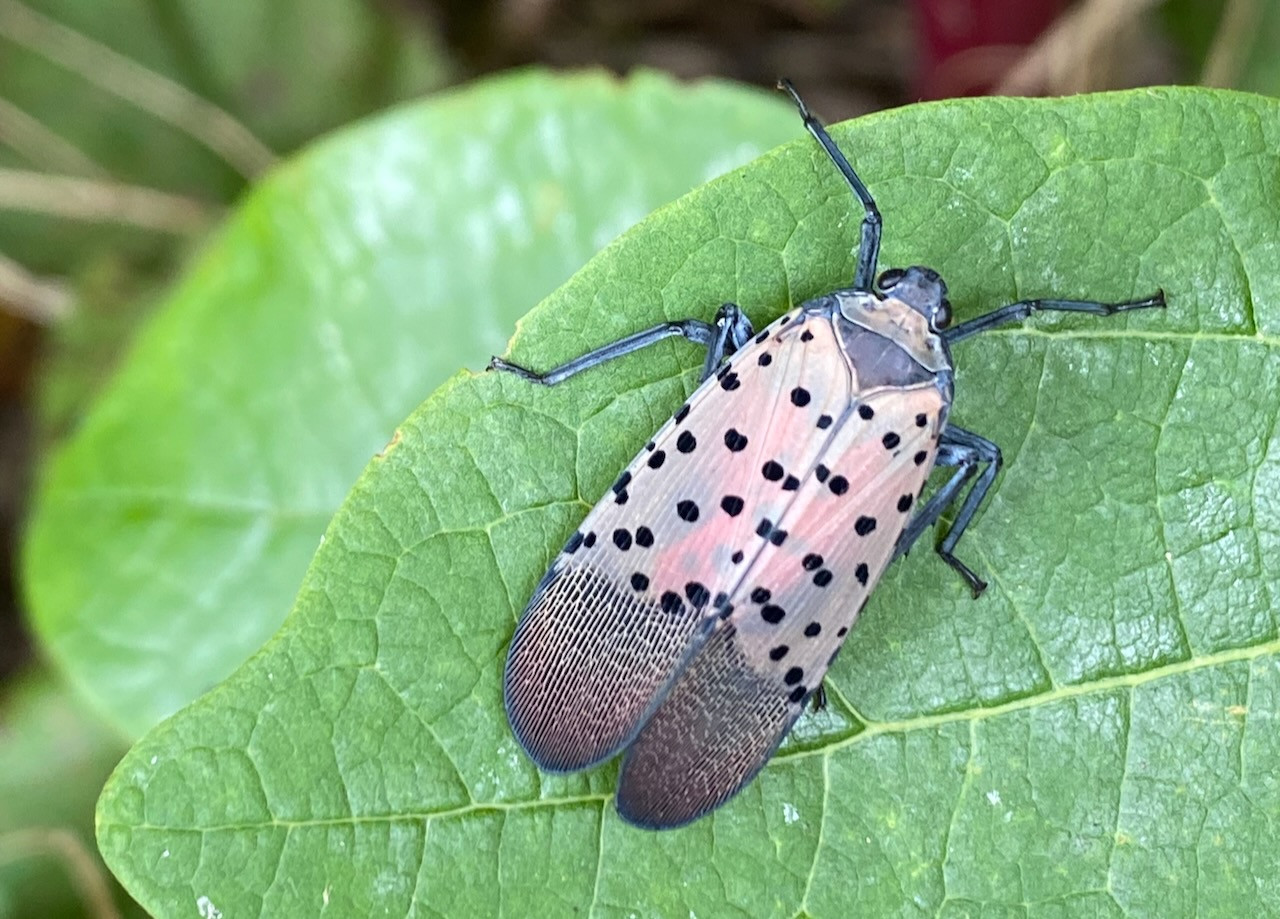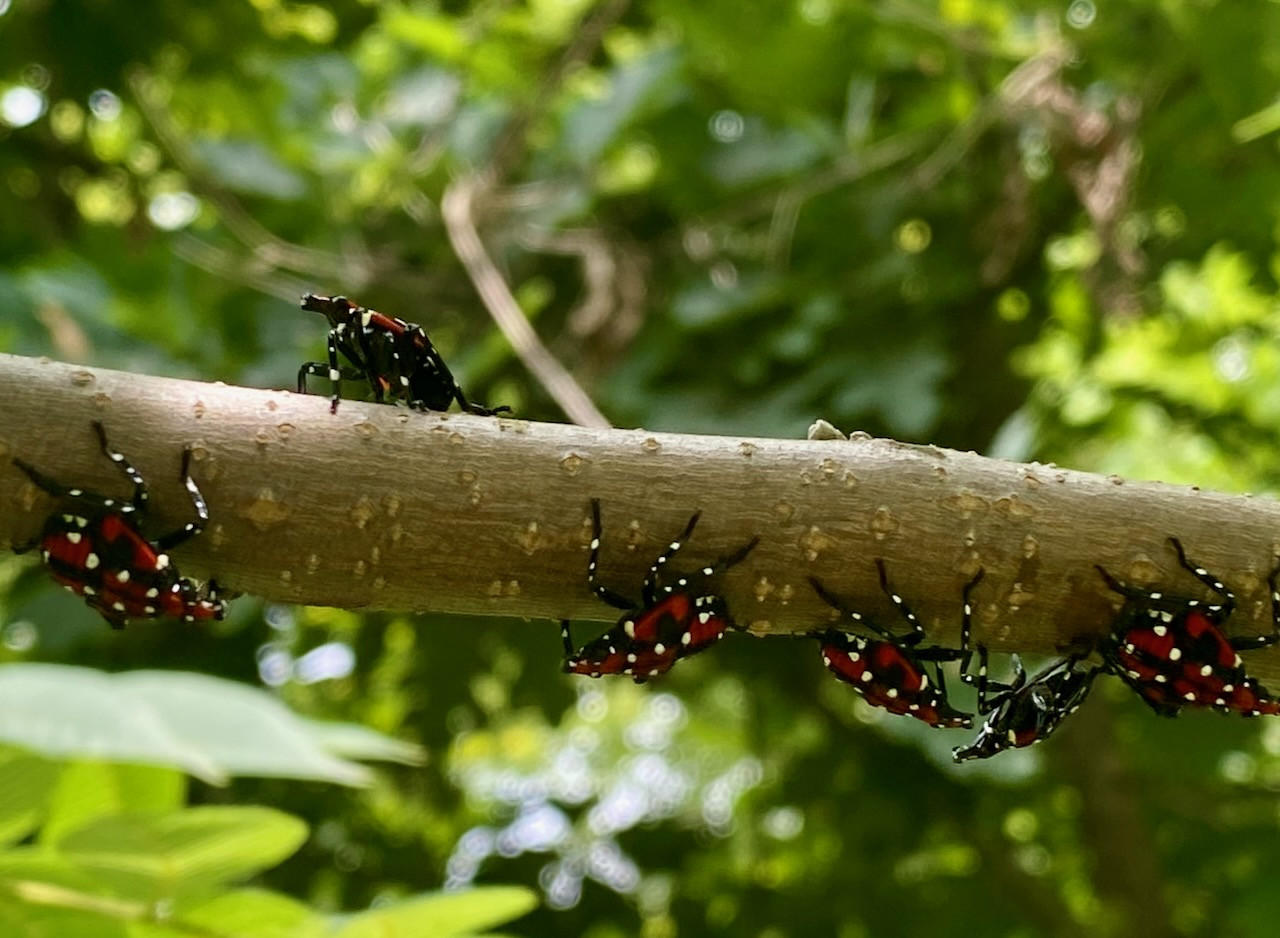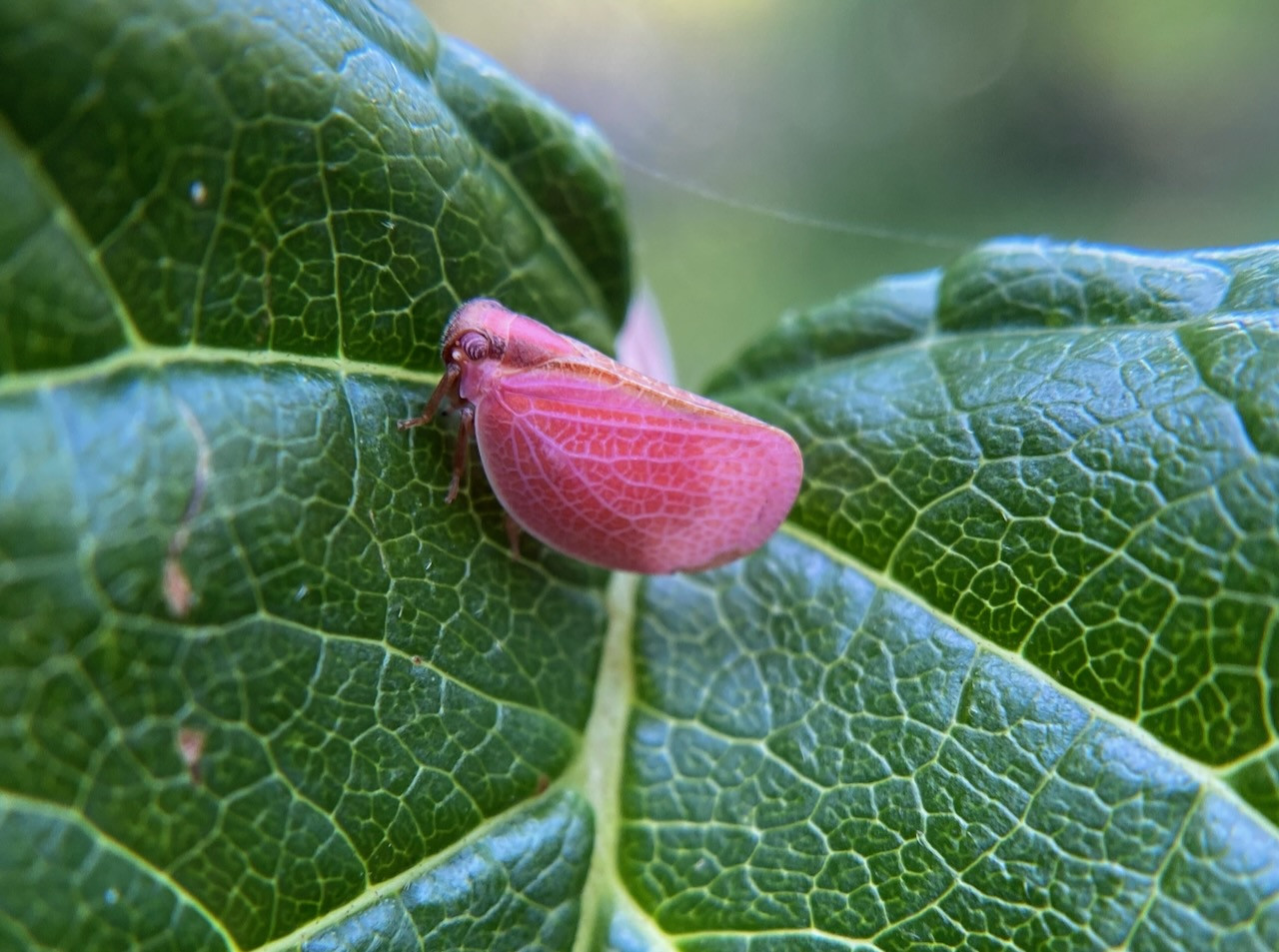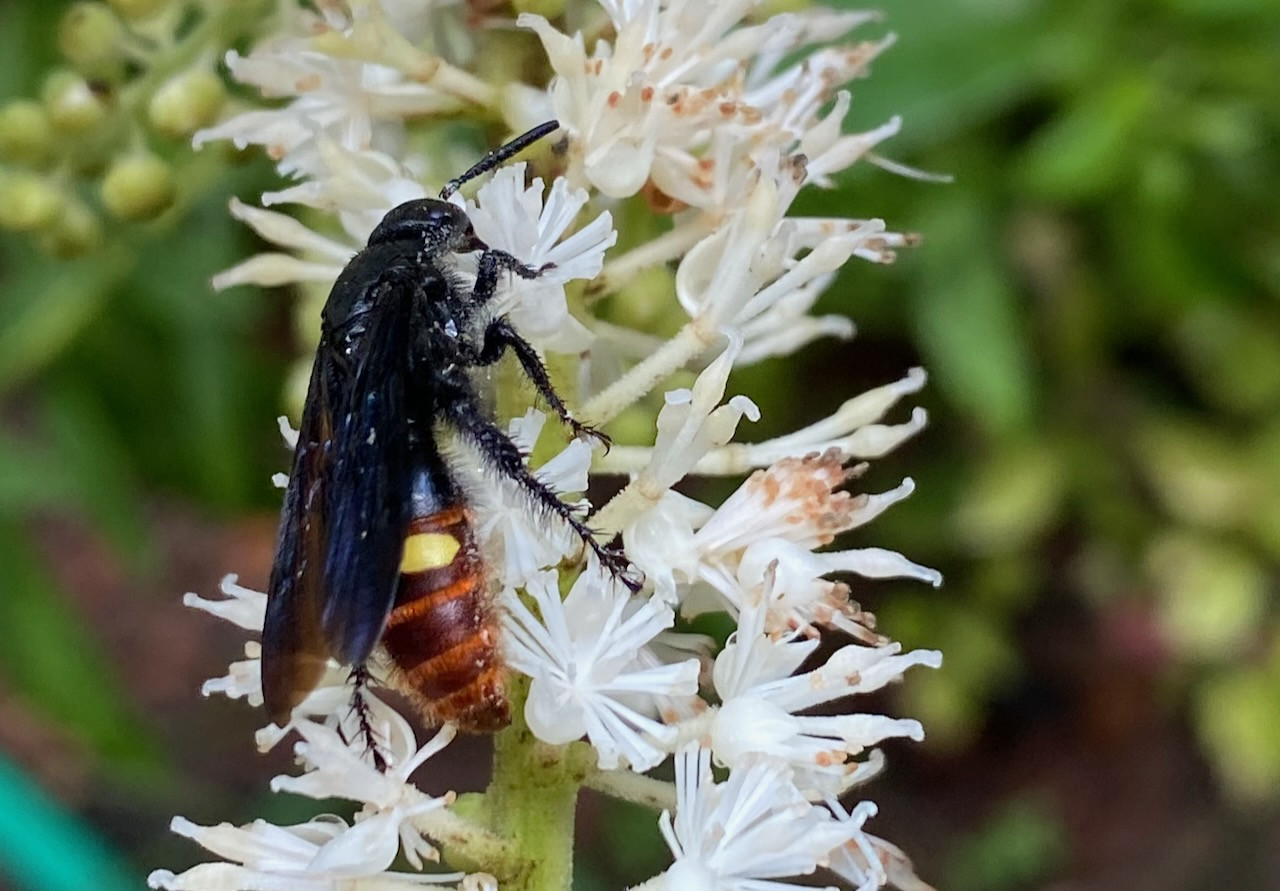The arrival of the spotted lanternfly was met with dread, but perhaps not for the reasons you’d expect. The real fear wasn’t about garden devastation, but the anticipated wave of panic: frantic online posts questioning every bug sighting, followed by declarations of insect squashing and anxieties about plant destruction. This scenario felt all too familiar, echoing the alarm bells of a decade prior with the brown marmorated stink bug “invasion.” We were warned of their invincibility, their crop-devouring habits, and their impending takeover of our homes each winter. For a time, they did proliferate, even sampling the indoor sunflower seedlings.
 Spotted lanternfly
Spotted lanternfly
It turned out nature had other plans. Praying mantises discovered an easy meal, Carolina wrens became window-screen acrobats hunting stink bugs, and even jumping spiders, seeking winter shelter indoors, joined the feast. The stink bug apocalypse never materialized, and the ecosystem found its balance.
My introduction to the spotted lanternfly came years before their local arrival, through university agricultural fair swag. Keychains, stickers, hats – all promoting the eradication of this striking insect, labeled a menace destined to destroy crops and decimate trees. Promotional materials painted a grim picture of ecological disaster, fueled by the invasive tree of heaven, its preferred host plant.
Upon returning home, initial research revealed a less catastrophic reality. The primary concern for homeowners, even then, seemed to be the sticky honeydew the lanternflies excrete on patio furniture. Mass violence against these creatures hardly seemed justified for such a minor inconvenience.
However, in the years between the lanternfly’s Pennsylvania debut and its Maryland arrival, the predicted hysteria unfolded. Harmful sticky traps ensnared birds and other wildlife in the indiscriminate war against lanternflies. Native trees became collateral damage. A native plant Facebook group recounted the removal of river birches simply for hosting lanternflies. A neighbor misidentified our native hickories as the invasive tree of heaven. How many native trees have been wrongly felled, sacrificed to a dubious cause?
 Spotted lanternfly nymphs
Spotted lanternfly nymphs
The spotted lanternfly’s reality hasn’t matched the doomsday predictions. Penn State researchers debunked the myths in early 2022, stating lanternflies rarely kill trees. August research further indicated minimal hardwood tree damage in natural settings where the insects are mobile. Despite this, some entomologists continue to advocate for mass-squishing campaigns, as highlighted in a New York Times article. While acknowledging stomping’s ineffectiveness in population control, a Cornell entomologist suggested it “helps engage the public” and offers a sense of “empowerment.”
Empowerment to do what exactly? To perpetuate a simplistic view of “good” versus “bad” insects, imposing rigid human judgments onto the natural world? What message do we send when children learn kindness to caterpillars and spiders one day, only to be encouraged to stomp lanternflies the next? Imagine if we dedicated half the energy spent stomping lanternflies and destroying plants to understanding native planthoppers and trees. We could make a far more positive impact on nature. Research on native planthoppers is scarce, while information about spotted lanternfly “doom” is readily available, demonstrating our skewed priorities.
 Pink two-striped planthopper
Pink two-striped planthopper
Protecting crops, particularly vulnerable monocultures like vineyards, is a valid concern. However, extending this protective impulse to all landscapes warrants reconsideration. Instead of inciting violence, why not encourage public observation? How do lanternflies interact with wild grapevines abundant in wildlife-friendly habitats? How do these vines respond, and what can we learn from observing trees like the staghorn sumac, which recovered from a lanternfly infestation and drought, emerging stronger?
Perhaps, instead of focusing on eradication, we should explore natural deterrents. While the question “What Plants Do Flies Hate” might lead to broad searches for fly-repelling herbs, it also prompts us to consider a more holistic approach to pest management. Nature offers its own solutions, often far more effective and less harmful than human intervention.
 Bluewinged wasp on black cohosh
Bluewinged wasp on black cohosh
Attracting natural predators and parasitoid wasps creates a balanced ecosystem. Bluewinged wasps, for example, control Japanese beetle larvae, another insect that once triggered excessive human intervention. We must step back, calm down, and resist reactive instincts. Past experiences, like my own with Japanese beetles and soapy water jars, highlight the pitfalls of fear-driven responses. My niece’s innocent question, “I thought you liked the little fellas?” was a stark reminder of the ethical implications of our actions.
Let’s break free from cycles of needless destruction. Let’s stomp out violence, reactive behaviors, and narrow thinking, not lanternflies. Instead of focusing on what plants to destroy or what insects to hate, let’s cultivate an environment that naturally discourages pests and encourages biodiversity. This approach moves beyond simplistic solutions and embraces the complexity and resilience of nature.
Endnote: Removing Tree of Heaven
 Tree of heaven seedling with spotted lanternfly
Tree of heaven seedling with spotted lanternfly
Another common reaction to spotted lanternflies is pesticide use on tree of heaven. However, tree of heaven removal can be simple and pesticide-free. Cutting down the tree and pulling suckers over several years, a minimal time investment annually, can effectively eliminate it. The presence of competing native plants further aids in preventing regrowth. Distinguishing tree of heaven from similar native trees is crucial, and resources like online video reels can assist in identification.